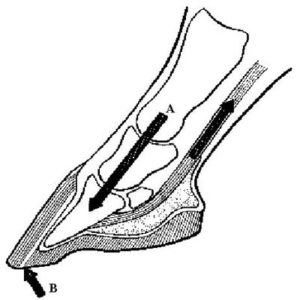What we do know is that through smart management you can reduce the risk of grain overload in your horses.
Carbohydrate overload laminitis.
One type of inflammatory laminitis is grain overload otherwise known as carbohydrate overload.
Over the years a huge amount of research has built up to demonstrate the consequences of such an overload on firstly the microbial balance in the hindgut and ultimately the weakening of the support given.
This type of laminitis is often seen in performance horses on high starch diets or horses when they get very sick.
A grading system for.
Request pdf carbohydrate alimentary overload laminitis in acute laminitis the suspensory apparatus of the distal phalanx fails at the lamellar dermal epidermal interface.
Exactly how these hindgut changes cause a restriction in blood supply and inflammation of the laminae in the hoof remains unknown.
The effect of alimentary carbohydrate overload on hoof temperature was investigated to determine the state of the sublamellar vasculature preceding the onset of equine laminitis.
When we think about the nutritional causes of laminitis our first thought is to an overload of carbohydrate mainly starch into the hindgut.
In the horse carbohydrates are supposed to be digested and absorbed in the small intestine.
Hoof core and ambient temperatures and heart rate were logged continuously in 21 mature standardbred horses kept in an environmental chamber set at 10 degrees c.
Many experts agree that grain overload and the changes it causes in the hindgut trigger laminitis.

